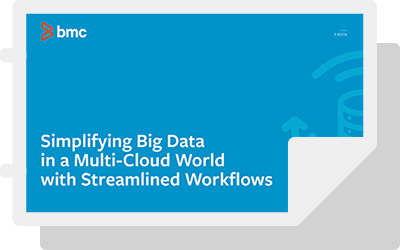
We are at the beginning of mainstream adoption and eventually every organization will want to benefit as the lines of business push for better access to big data. Today, adoption varies across industry segments as some use cases are more predominant than others. IDG’s 2015 Big Data and Analytics study highlights data-driven initiatives and strategies that are driving these big data investments. This chart published by IDC illustrates users by sector and investment plans for 2015.

No matter which sector you’re in, these are some common challenges that IT teams face in managing big data deployments:
- Avoiding too many siloed big data initiatives
- Ensuring the team is staffed with the appropriate skills to address new challenges
- Guaranteeing secure storage and access to unstructured data
- Monitoring big data services and optimizing an ever-growing capacity
- Collaborating across functions and businesses as the ownership of data is fragmented across the organization
- Keeping up with a rapidly evolving technology portfolio
Discovery and dependency mapping solutions address these big data challenges to give IT confidence, knowing precisely the matrix of configurations. The ability to have in-depth information on every server, storage, network switch, load balancer, and firewall, along with software versioning visibility and knowing what is running and what is idle, will make any IT representative’s job much easier. Software license audits and identifying extraneous software that is running are prime examples for needing discovery and dependency mapping.
A robust discovery and dependency mapping solution will offer broad coverage of various components that need to be managed in a big data environment, including:
- Technology frameworks
- Apache: Ambari, Cassandra, Chukwa, Falcon, Flume, Hadoop, Hbase, Hive, Hue, Oozie, Pig, Solr, Spark, Sqoop, Tika
- Infrastructure
- Databases: VoltDB, MongoDB, Informatica Powercenter, Terrastore, Datastax, Basho, Oracle, MySQL, MSSQL, memSQL, Teradata, SAP HANA
- Storage: EMC, NetApp, IBM, HP, Dell, Hitachi
- Analytics: Cloudera, MapR, HortonWorks, Pivotal, IBM Netezza
- Applications
- Business intelligence: Hyperion, Business Objects, Autonomy, IBM Infosphere, Tibco
- Operational intelligence: New Relic, Sumologic
Getting a holistic view of your IT systems and how they deliver business services is invaluable as you plan out your big data deployment. Application discovery and mapping along with powerful analytics will arm your team with the data needed to manage the inevitable challenges of such an immense project.







